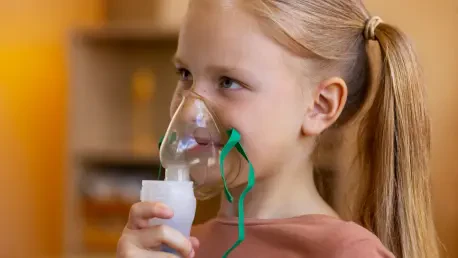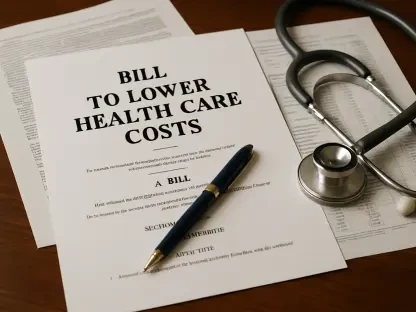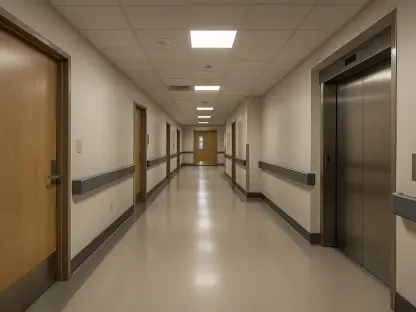In a remarkable stride forward for pediatric asthma treatment, a recent study has unveiled a potential game-changer: a two-in-one inhaler that combines budesonide, an inhaled corticosteroid, with formoterol, a fast-acting bronchodilator, slashing asthma attacks in children by nearly half. Known as the CARE (Children’s Anti-inflammatory Reliever) trial, this research focused on children aged 5 to 15 with mild-to-moderate asthma and compared the innovative combined therapy against the traditional salbutamol reliever. The results are striking, offering a beacon of hope for families navigating the daily challenges of asthma management. With over 100 million children worldwide affected by this chronic respiratory condition, the implications of this discovery resonate on a global scale. This advancement not only promises fewer emergencies but also raises the possibility of aligning pediatric asthma care with the more effective standards already in place for adults, potentially transforming lives.
Revolutionizing Relief with Dual-Action Therapy
The CARE trial has delivered compelling evidence that the budesonide-formoterol inhaler reduces asthma attacks by an impressive 45% compared to salbutamol, the long-standing standard reliever medication. Children using the combined inhaler experienced an average of just 0.23 attacks per year, a significant drop from the 0.41 attacks seen in those using salbutamol. This reduction equates to approximately 18 fewer asthma attacks annually for every 100 children who switch to the new therapy. Such a decrease could dramatically lessen the frequency of emergency situations, providing relief to both young patients and their families. The study’s findings, conducted over a full year, underscore the potential for this treatment to redefine how mild-to-moderate asthma is managed in pediatric populations, marking a pivotal shift away from merely reacting to symptoms toward a more proactive, preventive approach.
What sets the budesonide-formoterol inhaler apart is its dual mechanism of action, addressing both the immediate symptoms and the underlying causes of asthma attacks. While salbutamol works solely by relaxing tightened airway muscles for quick relief, the combined therapy also incorporates an anti-inflammatory component through budesonide, which targets the chronic inflammation often responsible for triggering exacerbations. This two-pronged strategy offers a more comprehensive solution, reducing the likelihood of severe episodes that can disrupt a child’s life. Beyond the numbers, this means fewer sleepless nights for parents and less anxiety for children who fear sudden attacks. As the medical community digests these results, the combined inhaler emerges as a promising tool that could shift the paradigm of asthma care, prioritizing long-term control over temporary fixes in a way that salbutamol alone cannot achieve.
Ensuring Safety for Young Patients
Safety remains a paramount concern when introducing new treatments for children, especially those as young as 5, whose growth and development are still in critical stages. The CARE trial addressed these worries head-on, finding no significant differences in growth, lung function, or overall asthma control between children using the budesonide-formoterol inhaler and those on salbutamol. This reassuring outcome suggests that the combined therapy poses no additional risks compared to the current standard, alleviating potential hesitations among parents and healthcare providers. With safety confirmed, the conversation can pivot from caution to opportunity, focusing on how this treatment might reduce the burden of asthma-related disruptions. The study’s comprehensive evaluation over a year provides a solid foundation of evidence, ensuring that the shift to a new reliever does not come at the expense of a child’s well-being.
Beyond the clinical metrics, the safety profile of the combined inhaler opens doors to broader adoption without the shadow of unforeseen side effects looming over families. For many parents, the fear of stunted growth or compromised lung health often overshadows the benefits of new medications, creating reluctance to move away from familiar options like salbutamol. The CARE trial’s findings dismantle these barriers, presenting the budesonide-formoterol inhaler as a viable and secure alternative that maintains a child’s health trajectory while offering superior protection against attacks. This balance of efficacy and safety could encourage more clinicians to recommend the therapy, potentially leading to fewer hospital visits and a noticeable improvement in daily life for children with asthma. As these results gain traction, they pave the way for a smoother transition to a treatment that prioritizes both immediate relief and long-term stability.
Closing the Treatment Gap Across Ages
For years, a disparity has existed in asthma management protocols, with adults benefiting from the budesonide-formoterol inhaler as the recommended reliever therapy while children have remained reliant on salbutamol due to insufficient evidence supporting the combined approach in younger age groups. The CARE trial, spearheaded by the Medical Research Institute of New Zealand in collaboration with leading global institutions, finally bridges this gap with robust data advocating for the use of the two-in-one inhaler in pediatric care. This development is a crucial step toward harmonizing treatment guidelines across all ages, ensuring that children are no longer excluded from accessing advanced therapies that have proven effective in older populations. The push to update global asthma protocols based on these findings is gaining momentum, with experts emphasizing the need for equitable care standards.
The significance of aligning pediatric and adult asthma guidelines extends beyond clinical practice into the realm of fairness in healthcare delivery. Children with asthma often face unique challenges, including frequent interruptions to education and social activities, which can be mitigated by adopting treatments already successful in adults. The CARE trial’s evidence provides a compelling case for revising recommendations, potentially allowing millions of young patients to experience the same level of control over their condition as their older counterparts. This shift could also streamline training for healthcare providers, who would no longer need to navigate separate approaches for different age groups. As discussions around implementation intensify, the focus remains on ensuring that the transition to combined therapy is seamless, supported by education for both families and medical professionals to maximize the benefits of this groundbreaking advancement.
Transforming Lives on a Global Scale
Asthma’s impact reaches far beyond individual health, imposing a significant burden on families, schools, and healthcare systems worldwide, with an estimated 113 million children and adolescents affected. The potential of the budesonide-formoterol inhaler to reduce asthma attacks by nearly half offers more than just medical relief; it promises a profound improvement in quality of life. Fewer attacks mean less fear and anxiety for children who dread the sudden onset of symptoms, alongside reduced absenteeism from school and fewer emotional strains on parents. The ripple effects of this therapy could reshape daily experiences for millions, allowing kids to participate more fully in activities without the constant threat of an asthma exacerbation. On a global level, this represents a monumental opportunity to enhance well-being and reduce the societal costs associated with managing this chronic condition.
The broader implications of the CARE trial’s findings also touch on the urgent need to address disparities in asthma care, particularly in regions where access to advanced treatments remains limited. Implementing the combined inhaler as a standard reliever could significantly lessen the strain on healthcare resources by cutting down on emergency interventions and hospitalizations. This is especially critical in underserved areas where asthma often goes undertreated, leading to worse outcomes for children. As global health organizations take note of these results, the push for widespread adoption of the therapy grows stronger, with the potential to influence policy and funding decisions that prioritize child-focused interventions. The vision of transforming asthma management worldwide hinges on making this effective treatment accessible to all, ensuring that geography or economic status does not dictate the level of care a child receives.
Looking Ahead to Better Asthma Management
Reflecting on the strides made through the CARE trial, it’s evident that the journey toward optimal asthma care for children took a significant leap forward with the validation of the budesonide-formoterol inhaler. The substantial reduction in asthma attacks, coupled with a proven safety profile, marked a turning point in how pediatric asthma was approached. These findings not only challenged the status quo of relying on salbutamol but also set a precedent for prioritizing preventive strategies over reactive ones. The collaboration among top research institutions underscored the value of unified efforts in tackling widespread health challenges, ensuring that the results carried weight in clinical and policy arenas.
Moving forward, the focus must shift to actionable steps that build on this momentum. Updating global asthma guidelines to include the combined inhaler for children should be a priority, supported by initiatives to educate healthcare providers and families about its benefits. Additionally, efforts to expand access in low-resource settings could address long-standing inequities in care. Future research, such as planned studies to further validate these outcomes across diverse populations, will be crucial in solidifying the therapy’s role. By maintaining this trajectory, the medical community can ensure that the promise of fewer asthma attacks becomes a reality for every child in need, reshaping the landscape of pediatric respiratory health for generations to come.









